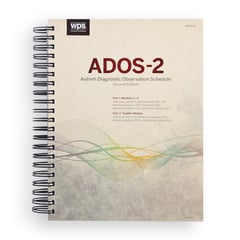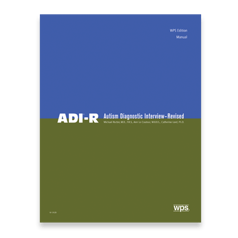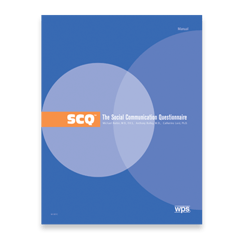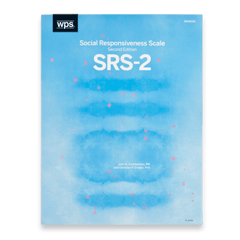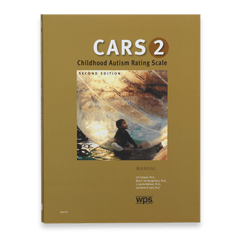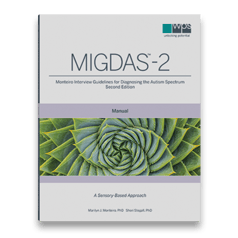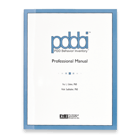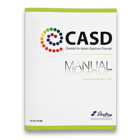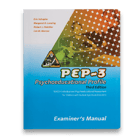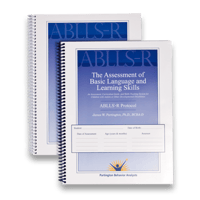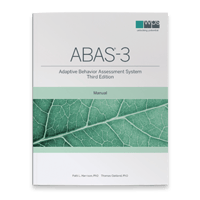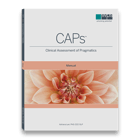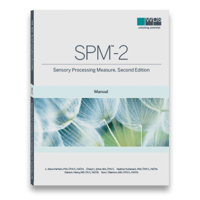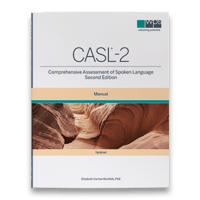Autism Assessment
and Diagnosis
What is Autism?
Autism spectrum disorder (ASD) is a neurodevelopmental disability that can cause social, communication and behavioral challenges.
ASD is identified by a broad range, or a "spectrum," of symptoms, which can range from mild to severe.
What Does Autism Mean?
Each person with ASD will likely demonstrate unique patterns of behaviors and symptoms, with severity levels ranging from low to high functioning. Yet children diagnosed with “low functioning” autism can be quite functional in areas of life, while those diagnosed as “high functioning” may still need daily help.
Many with ASD will struggle with communication and social situations. They will often experience sensory problems. Some will struggle with low cognitive ability and difficulty learning while others will be gifted academically.
How Clinicians Spot Autism Before Formal Assessment: Symptoms
Signs of ASD begin shortly after birth or during early childhood and typically last into adulthood.
Infants can display signs of ASD, including reduced eye contact and indifference to caregivers.
Young children with ASD can engage in repetitive behaviors, such as hand movements. Using peripheral vision, they might pick up a block and place it in exactly the same place. Those with ASD have different ways of learning, understanding and communicating, and reacting to things.
What is the best way to test for autism?
No brain scan or blood test can tell us.
A clinician making a diagnosis must determine if a patient’s symptoms significantly impair their life, including if someone is on the spectrum and if so, what are their unique strengths and differences.
The best way to conduct an autism evaluation is to collect and consider all sources of data, including evidence-based measures. It’s also an industry best practice, although not every clinician uses multiple assessments in concert to evaluate an individual – and as a result, parents can end up getting conflicting and confusing diagnoses and reports.
The right ASD rating scales and complementary measures can help a clinician or pediatrician make that life-changing diagnosis, a monumental event for the child and their family.
Although COVID-19 is changing how we assess for ASD, a professional with prior education, training, and experience that includes extensive exposure to ASD accurately make diagnoses every day.
Can Autism Be Cured?
Treatment/Intervention
No treatment “cures” ASD. Treatment may be better understood as intervention. Following a diagnosis, targeted interventions can help improve a range of skills leading to a better quality of life.
Since those with ASD has a unique pattern of symptoms and severity, many would benefit from individual strategies to best manage and cope with their challenges. Early intervention is critical but also helpful at any age. So is working closely with a mental health professional or pediatrician, as a child’s needs may change over time.
Some doctors may prescribe medicine to treat autism symptoms. Others will recommend intervention strategies that build daily living skills, including social-communication skills and cognitive ability. Interventions at school can be highly individualized. Therapies can also involve the family.
Common interventions for those with ASD include:
Is Autism Genetic?
We know there is no single known cause of ASD. Instead, it is likely caused by multiple factors. Many people wonder: Is autism hereditary? The environment and genetics do play a role in determining who develops ASD.
What Causes Autism?
Common risk factors include:
- Family history: A family member with ASD increases the chances of having ASD.
- Other disorders: Those with certain conditions and genetic disorders, including Down, Rett and fragile X syndrome, are more likely to have ASD.
- Babies born before 26 weeks may be at greater risk to develop ASD.
- Babies born to older parents may be at greater risk to develop ASD.
Researchers continue to study causes of ASD, including medications administered during pregnancy and other environmental factors.
Prevention
There is not a way to prevent ASD. Understand the causes and treatments available. Early diagnosis and intervention can be critical to improving social skills, cognitive ability, daily functioning, and overall school and family life.
How Common is Autism?
According to the CDC, about 1 in 54 children in the U.S. is diagnosed with ASD, according to 2016 data. Boys are about four times more likely to be diagnosed with ASD than girls, and the disorder occurs in all racial and ethnic groups.
The prevalence of autism has been steadily increasing since researchers first began tracking the data in 2000. It’s unclear if the upward trend is a result of improvements in how the disorder is diagnosed or whether there’s truly an increase in the population.
Is Autism a Disability?
Yes, ASD is a neurodevelopmental disability that can cause serious social, communication and behavioral challenges, ranging from mild to severe.
Is ADHD on the Autism Spectrum?
No, ADHD is not autism. But they have some of the same symptoms, which can sometimes mean that an individual is misdiagnosed. A full neuropsychological evaluation administered by a trained professional using multiple evidence-based assessments will provide findings in multiple areas.
Autism Types
The following were at one time believed to be distinct conditions, but now they fall under the umbrella of autism spectrum disorder:
- Asperger's syndrome: Children display social difficulties but can perform above average on intelligence tests.
- Childhood disintegrative disorder: Children develop typically for at least 2 years before losing communication and social skills.
- Autistic disorder: Children struggle with social situations, communication, and play in children 3 years old and younger.
- Pervasive developmental disorder (PDD or atypical autism): Children exhibit delays in social and communications skills, but don’t fit into another category.
Behaviors Associated with Autism Include:
- Small amount or inconsistent eye contact/prefers to be alone
- Difficulty understanding another’s feelings or talking about their own
- Difficulty expressing their own needs using common words or motions
- Tends not to look at or listen to others/difficulty relating to others
- Difficultly sharing fun objects or activities with others/tends not to look at objects shown by others
- Slow or nonresponsive to others calling their name
- Conversation with others is a challenge
- Speaking about a subject of interest despite a lack of interest from others
- Displaying facial expressions and body language inconsistent with conversation
- Monotone voice or sing-song
- Difficulty understanding another’s point of view
- Often prefers not to be held or cuddled
- Does not respond to others’ speaking, but does respond to other sounds
- If interested in people, struggles to interact with them
- Does not play games involving pretending
- No longer says words and expressions they once used
- Repetitive, restricted movements, behaviors or vocal sounds, including unusual behaviors such as stimming that can be self-soothing and self-stimulating
- Melting down emotionally over slight changes in routine/difficulty maintaining sleep routines
- Experiencing sensitivity to sensory input, including how textures feel, loud noises, temperatures, smells, light, taste.
Those with Autism Also Have Strengths:
- Unique worldview
- Ability to learn in detail and remember information for long periods of time
- Strong long-term memory/detail-oriented
- Hyper-focus
- Strong visual and auditory learners
Autism Assessments
ADOS-2: The world’s most comprehensive ASD measure
- A clinician’s chance to see how the child or adult interacts socially and how much their behavior looks or does not look like autism
- Requires training and takes into consideration the examinee's age, developmental level, and language level
- Includes over 100 stimulus items to assess and diagnose ASD beginning at 12 months old
ADI-R: Parent-caregiver interview
- Lengthy – takes as long as 2 ½ hours to administer and score
- Reveals the examinee’s early development, which is critical to an autism evaluation
- A clinician makes rating based on what the parent says and is designed to be used in conjunction with the ADOS-2
SCQ: Screener for the ADI-R
Available Online
- Both current and lifetime forms have simple cutoff point without nuanced details
- Developed from the same author group of the ADOS-2 and ADI-R (because the ADI-R is a long assessment)
CARS2: Clinician rating scale
- Only rating scale designed to be completed by the clinician
- Using the CARS2, the clinician is able to gather information from parents and caregivers
MIGDAS-2: Diagnostic interview guidelines
- Qualitative diagnostic interview centered around a child’s preferred areas of interest
- Does not have a standardization sample and scores as a typical measure does
- Sensory-based process that helps clinicians approach the evaluation, conceptualize it, and gather information together
Other Autism Measures
PDDBI: Assesses responsiveness to intervention in children with ASD
CASD: Distinguishes youngsters with autism from those who have ADHD
PEP-3: Assesses the skills and behaviors of young children with autism and communication disabilities
AFLS: Helps those with autism or developmental delays become more independent
ABLLS-R: Identifies deficiencies in language, academic, self-help, and motor skills
Autism-related assessments
ABAS-3: Provides a complete assessment of adaptive skills across the life span
Available Online
CAPs: Provides comprehensive information on pragmatic language skills and social language development
Available Online
SPM-2: Provides a complete picture of sensory integration and processing difficulties in multiple environments
Available for Presale
SPM-2 Quick Tips: Offers item level intervention strategies to help with sensory integration and processing challenges
Available for Presale
CASL-2: Measures the oral language processing skills of comprehension and expression
Available Online
FAQs
What is required for someone to become competent in using the ADOS-2?
If you are an ADOS-2 user who has not previously been trained in the ADOS, you should do the following to obtain essential competence in the ADOS-2:
- Make sure you have prior education, training, and experience that includes extensive exposure to autism spectrum disorders.
- Study the ADOS-2 Manual. You can purchase and complete an associated CE Questionnaire and Evaluation Form (W-605MCE) to receive 6 contact hours of professional continuing education credit for learning the ADOS-2 Manual.
- Take a WPS in-person clinical training workshop or use the WPS DVD Training Package (W-605DVD). Both options offer training in all five ADOS-2 modules.
- Upon completion of the in-person workshop, you will receive a certificate of completion that is equivalent to 12 contact hours of professional continuing education credit. You will also receive materials needed to learn the Toddler Module, and you can purchase and complete a CE Questionnaire and Evaluation Form (W-606CE) to obtain an additional 12 contact hours of professional continuing education credit for learning the toddler-specific materials.
- If you opt to complete your training using the WPS DVD Training Package (W-605DVD), you can purchase and complete the associated CE Questionnaire and Evaluation Form (W-605CE) to receive 30 contact hours of professional continuing education credit for learning the materials.
- Practice using the ADOS-2 on cases that are not part of formal evaluations, and become completely confident that you are familiar with the assessment activities and can apply the coding categories accurately. If you have considerable experience in formal behavioral observation and individual test administration, you may reach this level in as few as 10 practice sessions (2 per module). Otherwise, you may need considerably more practice to obtain competence in administering and coding the ADOS-2.
- If you are involved in formal research that may be published in peer-reviewed journals, you must also take a research training workshop, which is followed by exercises to establish item coding accuracy to a specific criterion. WPS is not involved in the research training workshops. For information on these courses, please visit: http://psychiatry.weill.cornell.edu/education-training/autism
If you are an ADOS-2 user who is already trained in the ADOS, you should do the following to obtain essential competence in the ADOS-2:
- Study the ADOS-2 Manual. You can purchase and complete an associated CE Questionnaire and Evaluation Form (W-605MCE) to receive 6 contact hours of professional continuing education credit for learning the ADOS-2 Manual.
- Use the WPS DVD Training Upgrade Package (W-606DVD) to obtain additional training focused on the new Toddler Module. You can purchase and complete an associated CE Questionnaire and Evaluation Form (W-606CE) to obtain 12 contact hours of professional continuing education credit for learning the material in the DVD Training Upgrade Package.
- Practice using the ADOS-2 on cases that are not part of formal evaluations, and become completely familiar with the ADOS-2, including the updated administration, coding, and scoring guidelines and the new Toddler Module.
- If you are involved in formal research that may be published in peer-reviewed journals, you must also take a research training workshop, which is followed by exercises to establish item coding accuracy to a specific criterion. If you have already received research training in the ADOS, you may need to update it for the ADOS-2. WPS is not involved in the research training workshops. For information on these courses, please visit: http://psychiatry.weill.cornell.edu/education-training/autism
What is an ADOS-2 clinical training workshop?
An ADOS-2 clinical training workshop is a two-day course that uses a lecture format to introduce people to the basic principles of administering and scoring the ADOS-2. For more information about ADOS-2 clinical workshops click here.
The WPS DVD Training Package (W-605DVD) and its associated CE Questionnaire and Evaluation Form (W-605CE) also provides equivalent content. Either of these provides one of the essential steps towards competence in using the ADOS-2 in everyday clinical practice.
Who may attend an ADOS-2 clinical training workshop?
Workshop attendees are typically professionals who will be qualified to use the ADOS-2 in practice – that is, professionals who, prior to the workshop, have education, training and experience in using individually administered test batteries and who have a background and experience in the treatment of autism spectrum disorders. Some examples of clinicians who have a professional mandate to treat autism spectrum disorders and who make use of the ADOS-2 in their daily work are clinical and school psychologists, psychiatrists, occupational therapists, and speech and hearing professionals. In some cases, schools and clinics will send additional staff to a workshop with a view that a better understanding of the instrument will help their teachers, counselors, special educators, or other program staff make better use of reports based on ADOS-2 results. Note that in all cases, however, simple attendance at the workshop is not sufficient to ensure competent use of the ADOS-2.
Once I have completed ADOS-2 clinical training, can I train someone else?
No. The WPS materials are designed to provide training to individual users only. Completion does not provide the additional materials and experiences required for the skills needed to train others. The WPS DVD Training Package (W-605DVD) can be used to train multiple clinical users at a single site.
Further training through the specialized research training course offered by the research community is required before others may be trained. (See the next two questions).
After I take the ADOS-2 training, can I diagnose autism spectrum disorders?
Learning to use the ADOS-2 and diagnosing autism spectrum disorders are two different professional activities. The ADOS-2 training is designed to help professionals learn to competently administer and score the ADOS-2. It is the first step toward that end—becoming fully competent on the ADOS-2 itself requires additional practice beyond the initial training. The ADOS-2 training is not a comprehensive curriculum in autism spectrum diagnosis. Autism spectrum diagnosis involves much more than administration of the ADOS-2; it typically involves a multidisciplinary evaluation of multiple areas of a child’s functioning, of which the ADOS-2 is just one piece.
The ADOS-2 is used in several kinds of practice. In each, the test user's credentials must match the purpose of the use. For example, a medical diagnosis requires a license, such as that of a medical doctor or clinical psychologist; a special education qualification requires a locally recognized license or credential, such as that of a school psychologist; and so on. The ADOS-2 can also be used for purposes other than making a diagnosis. For example, occupational therapists and speech and hearing professionals often use the ADOS-2 for treatment planning and program evaluation. Some speech and hearing specialists also use the ADOS-2 for early childhood screening and program qualification, as mandated by the state where they practice. It may be helpful to check with your local mental health licensing agency, and with colleagues who diagnose autism in your area of practice, with additional questions along these lines.
What is an ADOS-2 research training workshop?- Products
An ADOS-2 research training workshop is only available to those who have completed the in-person clinical training workshop. Research training focuses on bringing attendees' scoring skills to a high level of inter-rater agreement with the scoring practices of skilled examiners. The heightened level of accuracy is needed to ensure that item-level coding is comparable at different labs in different parts of the world where research is being conducted. Research training workshops are offered by the ADOS-2 authors and their colleagues; WPS is not involved in these courses. For information on research training:
United States: https://psychiatry.weill.cornell.edu/education-training/autism
United Kingdom contact: a.s.le-couteur@ncl.ac.uk
In other parts of the world, contact either group above to make arrangements.
Once I have completed an ADOS-2 research training workshop, can I train someone else?
Only in limited circumstances. A researcher who has taken the ADOS-2 clinical workshop and the ADOS-2 research workshop and achieved research reliability can, back in their home lab, train people that they work with on a daily basis. A letter with these responsibilities fully specified is given to each research trainee at the time the training workshop is completed. Note that even the original trainee at a research site is not seen as qualified to train people away from their own location until they undergo further practice and supervision in actual training. For example, the individuals who conduct the WPS in-person clinical workshops have worked under supervision as training workshop leaders in Dr. Lord's research labs.
Are there discounts available for use of the ADOS-2 in research or educational settings?
Yes! WPS provides a research discount on all of its test publications for graduate students and for researchers involved in formal, funded research directed at publication in peer review journals. WPS also offers scholarly discounts for educational use of its test materials. You may apply if you are using a WPS-proprietary product (identified by a “W-“ product number) in a research study or if you are planning to use WPS-proprietary products to train students. For information about how to apply for research and educational discounts, click here.
How often can the ADOS-2 be administered?
Research suggests that there are not overall practice effects on the ADOS-2. Although children who are given the ADOS-2 repeatedly (such as every month or so) may become more familiar with particular tasks (e.g., they may get better at following a birthday party routine), their scores are generally not affected, and the diagnosis as a whole does not seem to be impacted. The scoring of the ADOS-2 emphasizes the child’s spontaneous initiations and responses to the examiner’s behavior, as opposed to scoring of the tasks themselves. Therefore, it makes sense that becoming more familiar with an activity should not change the child’s scores. Similar observations have been made when the ADOS-2 is used repeatedly with adults with ASD; they may become more familiar with the tasks, but they are consistently classified on the algorithm as having ASD.
Although ADOS-2 scores do not change much on repeated administration, ideally it is better if examinees do not learn the tasks. There should always be good clinical reasons for repeating the ADOS-2, especially if it is administered more than twice within a brief interval. If it is known that the ADOS-2 is going to be repeated during a short period of time, the examiner may want to decide in advance to use different materials from the kit each time when possible (e.g., use one book one time and another the next).
How does the ADOS-2 fit into a team-based autism assessment?
Conducting team-based autism evaluations is the standard of practice in many school settings, and the ADOS-2 fits right in. In understanding how to use the ADOS-2 in the context of a team autism evaluation, it is important to differentiate a team autism evaluation from a team administration of the ADOS-2.
A team autism evaluation occurs when different professionals come together to provide a multidisciplinary approach to ASD assessment. This is ideal in order to gather information from multiple sources and make use of expertise from different disciplines. The ADOS-2 is only one source of information in a diagnostic assessment. Information must be gathered from multiple other sources, such as through interviewing parents, talking to teachers and medical professionals, conducting other direct testing (e.g., cognitive testing, language testing) with the child, and so on. Because the ADOS-2 is only one of many sources of information gathered during an autism assessment, conducting a team autism evaluation does not require that the ADOS-2 itself be administered as a team.
Nonetheless, it may be useful at times for multiple professionals to observe the ADOS-2 and consensus code the administration. When multiple professionals are present during an ADOS-2 administration, it is important to keep several considerations in mind. As described in the ADOS-2 manual, it is important that the ADOS-2 be administered by one person, as its primary focus is on interactive social behavior between the examiner and examinee. This recommendation does not preclude observers from being present during the administration. When another professional is present in the room during the ADOS-2 administration, however, it is important that the examinee never be confused about which person is the examiner, with whom he or she is expected to interact. Anyone present beyond the examiner should serve solely as an observer.
The ADOS-2 authors recognize the value of consensus coding a single administration to gain multiple perspectives, as well as to establish and maintain reliability among ADOS-2 examiners. Consensus coding occurs when one person administers and independently scores the ADOS-2 administration based on his or her own notes. Other observers who watched the ADOS-2 administration also independently score the administration based on their own notes. Then the examiner and the observers compare their codes and discuss any disagreements. The group arrives at a consensus code for each item, and the consensus codes are considered the "preferred" codes for that administration. A critical factor here is that each rater completes the codes independently and, after independent coding, the raters discuss and reach consensus. During training, raters may want to discuss codes as they complete them, but this is not appropriate for clinical practice or to be used in student or patient reports. Appropriate consensus coding in clinical practice requires raters to complete codes independently before reaching consensus.
The guidelines described here are intended to help autism evaluation teams make the best use of the ADOS-2 in the context of a team-based autism assessment.
When will ADOS-2 translations be available?
Access to translations is managed by WPS Rights & Permissions (rights@wpspublish.com). Several ADOS-2 translations have been licensed to our international publishing partners and will become available for all research and clinical applications when they are released. The full process of translation, back-translation, author-review, and production generally takes 18 to 24 months. WPS Rights & Permissions can also arrange authorization for academically qualified groups to make research-only translations for the ADOS-2 in languages where no commercial versions are underway. In addition, there are some 15 fully reviewed and authorized translations of the original ADOS, which remain valid and will be useful for users who cannot wait for or undertake the creation of ADOS-2 translations.
For information about formally published ADOS translations and in-development ADOS-2 translations, click here.
To obtain permission to make a translation or to inquire further about translations, please contact WPS Rights & Permissions (rights@wpspublish.com).
May I translate the ADOS-2 in a language other than English for research or clinical use?
It is the firm policy of WPS and the ADOS-2 authors that all ADOS-2 administrations must make use of a written translation that has undergone a formal review and approval process through WPS or one of our licensed international publishing partners. The authors take this position because of their concerns about proper standards of patient care. Experience indicates that translation can significantly affect ADOS-2 scores, and thus the reliability and validity of test results. Only properly reviewed translations can provide results that correspond with those published in the manual and research literature. WPS echoes these concerns, not only in exercising our responsibilities and obligations under international copyright law, but also in protecting the integrity of our proprietary materials across cultures. To help you meet professional standards when conducting assessments with the ADOS-2, WPS will continually work to broaden the availability of the ADOS-2 across language groups and cultures. All uses in translation must have the prior, written consent of WPS.
To obtain permission to make a research translation, or to inquire about available translations, please contact WPS Rights & Permissions (rights@wpspublish.com).
How do I calculate the Comparison Score for the Spanish language translation of the ADOS-2?
The Comparison Score for the Spanish language translation of the ADOS-2 can be calculated using a procedure identical to that used for the English version. However, the algorithm form for the Spanish language translation does not include the scoring information for the Comparison Score on the form itself.
To calculate this score after completing the algorithm form, there are four options:
- Refer to Appendix C of the English language ADOS-2 Manual, which includes full scoring information for the Comparison Score for all ADOS-2 Modules for which the score is available (i.e., Modules 1, 2, and 3).
- Refer to the algorithm page of the English language ADOS-2 protocol form that corresponds to the Spanish language module that was administered. The front and back sides of the English language form can be referenced alongside the scores from the Spanish language administration in order to calculate the Comparison Score.
- Use the English language ADOS-2 scoring CD in conjunction with the protocol form from the Spanish language administration in order to calculate the Comparison Score.
- Create an account on www.teacorrige.com for a complimentary web-based calculation of the Comparison Score. Each purchased set of Spanish language protocol forms includes a PIN number and instructions for accessing this web-based calculation. Further information about this system can be found in the Spanish language translation of the ADOS-2 Manual.
Can I modify the scripted language in the ADOS-2 to account for regional or cultural language variations?
As with all standardized assessments, care should be taken to follow the provided language as closely as possible when administering the ADOS-2. In contrast to many other standardized assessments, however, the standardization of the ADOS-2 does allow for and expect verbal instructions to be adapted when necessary to ensure the participant’s understanding of the task. This includes modifications to account for regional and cultural language variations.
There are various situations in which you may find it necessary to modify the scripted language to ensure the participant can fully understand and engage in the task. For example, when administering Module 3 to very young children, the phrasing of certain interview questions may need to be modified slightly so that the language is more age-appropriate. Similarly, when using an authorized translation of the ADOS-2, you may need to adapt the scripted language to account for regional or cultural variations in language use.
Whenever possible, it is best to plan ahead for the specific administration and determine where, if any, substitutions may be needed in places where the ADOS-2 provides a script. Planning in advance of the administration is helpful in avoiding situations where the participant might inadvertently be provided too many prompts, which in turn can affect coding.
Even with careful advance planning, however, there may be situations in which you first become aware of regional/cultural variations during the administration itself. At these times, you may modify the scripted language and repeat the press, if necessary, to ensure the participant understands the task. You should repeat the press with appropriately modified language only if you believe the specific scripted language has interfered with the participant’s ability to understand the task. You should not repeat the press just because the participant did not respond to the task. Some participants may not respond to a press at all, even after a clarification has been made.
The focus of the ADOS-2 is not on the participant’s understanding of specific words but rather on their social understanding and engagement. In this sense, variations “in the moment” can be made to ensure the participant understands the tasks. Care must be taken, however, to not change the social “press” itself and to not provide too many presses.
Can I use an interpreter to administer the ADOS-2 in a language other than English?
This question is related to another common question: How do I decide whether the ADOS-2 can be administered in English to an individual who is bilingual/multilingual?
As with any clinical assessment, the ADOS-2 should be administered in the language with which the examinee has the most familiarity and comfort. When determining the language of administration of the ADOS-2 for a bilingual examinee, it is important to remember that the goal of the evaluation is to maximize the examinee’s ability to participate in the assessment by minimizing the influence from the language of administration. In this sense, establishing the examinee’s comfort and familiarity with the language of administration is more important than determining which language is “dominant” per se.
Toddler Module and Module 1
The standardization for these modules includes samples of young children with limited receptive and expressive language skills (in any language), and the diagnostic algorithms give greater weight to nonverbal behavior. In order to validly administer the English version of these modules, the examiner should confirm that the examinee has begun to respond to or is comfortable with simple commands and statements in English (e.g., “Look!”). This may be confirmed by gathering information from the caregiver that suggests that the examinee is currently exposed to some English in the context of a therapeutic or educational program or in the home setting.
Modules 2, 3, and 4
These modules have a greater emphasis on spoken language and should be administered in the examinee’s dominant language by a native speaker whenever possible (authorized ADOS-2 translations are available in many languages). For Module 2, if this is not possible, care should be taken to ensure that the examinee understands the examiner at the level of simple phrases and familiar everyday expressions. For Modules 3 and 4, examinees should demonstrate basic proficiency in their comprehension of the examiner’s conversational language and have the ability to verbally express themselves using phrases and simple sentences in the same language. The examiner should have basic familiarity with the examinee’s dialect (inclusive of the examinee’s accent) and subculture-specific uses of language.
During the administration
Once testing is under way, it is acceptable to “code-switch” during the administration of any module, based on the needs of the examinee during the assessment. For example, it is acceptable for the examiner to ask questions in one language, if that is what the examinee understands better, but allow the examinee to answer in the other language. If the bilingual examinee does not respond to the examiner’s presses in one language, it may be necessary to present the press again in the other language.
Testing the limits
At times, the examiner may wish to test the limits and involve the caregiver, asking them to present a few activities using the language they use at home. This observation can help the examiner understand whether the examinee demonstrates different behaviors in different language contexts. When caregivers are asked to assist with administration of an activity, the examiner must help them understand the importance of saying or doing exactly what the examiner asks them to do, without any elaborations or embellishments. Testing the limits in this way provides clinically useful information; however, depending on the extent of change in the examinee’s behavior in different language contexts, it may be necessary to use caution when interpreting the results of the ADOS-2.
Considering the effects of the language of administration
After completion of the testing session, as is true of all assessments, examiners should question whether the examinee’s behavior during testing differed from behavior in other contexts (e.g., by asking the caregiver for their observations). If it is determined that the examinee’s behavior was markedly different and/or the examiner suspects that the language of administration affected the examinee’s social responses or the examiner’s ability to understand the child’s behavior, the data should not be interpreted or it should be interpreted with caution, and such qualifiers should be clearly stated in the summary report and/or relevant database.
Using an interpreter
Regardless of the language of administration, the examiner should have adequate familiarity with both languages of the bilingual examinee whenever possible. There may be clinical situations in which the only possible way to administer the ADOS-2 is with the presence of an interpreter. These situations may range from an examiner who needs minor assistance from an interpreter to comprehend the examinee’s words to an examiner who is mostly reliant on an interpreter to administer activities. When an interpreter is present, it is important to remember that administration through use of an interpreter is nonstandard and may not produce accurate results consistent with those published in the test manual or the research literature. This is particularly true when an interpreter must be relied upon for the majority of the administration. While administering the ADOS-2 with the assistance of an interpreter may provide useful qualitative information as a structured observation, the algorithms generally should not be used or should be interpreted with caution, as they have not been validated for use with an interpreter.
Authorized ADOS-2 translations
When administering the ADOS-2 (or portions of it) in a language other than English, the examiner must use the published translation for that language to be sure that the language used during the administration is standardized. Spanish materials are available through WPS, and materials in other languages are available from our international publishing partners (a list of available translations can be found on the WPS website). When an authorized translation is not available for a given language, it is not possible to provide a standard administration of the ADOS-2 in that language, even if the examiner is a fluent speaker of the language.
What is the BOSCC, how can I access it, and how does it relate to the ADOS-2?
The BOSCC (Brief Observation of Social Communication Change) is a treatment response measure of social communication behaviors and other behaviors associated with an autism spectrum disorder (ASD). Development of the BOSCC evolved through the expansion of codes from the ADOS-2 in order to capture more nuanced variation in behaviors. BOSCC coding can be applied to standard play contexts between a child/individual and an adult (e.g., parent, clinician) in a home or clinic setting. Researchers interested in the BOSCC should contact rights@wpspublish.com.
Can I administer the ADOS-2 remotely?
The ADOS-2 requires administration by a trained examiner who is in the same room as the examinee and in close contact, interacting with the same materials. As such, it is not possible to validly administer this assessment remotely. Administrations of the ADOS-2 should be delayed until it is possible to resume in-person contact. Specific to Module 4, although this module is less reliant on toys and materials than the other ADOS-2 modules, it still has required tasks that utilize materials, and the focus is still on the social interactions between examiner and examinee. Remote administration would require modifications to standard procedures, and such modifications are not recommended, as they are likely to change the social “press,” will limit the scope of observation, and may not produce valid results consistent with published research. Any administrations conducted in this manner should be for qualitative purposes only, and algorithms should not be used.
During COVID-19, can I validly administer the ADOS-2 while practicing social distancing and/or wearing personal protective equipment?
The ADOS-2 is used by a variety of professionals in many different practice settings around the world. As such, any given professional using the ADOS-2 during COVID-19 should review current practice guidelines for their area and recommendations from their local department of health and credentialing agencies to determine whether a standardized ADOS-2 administration can be conducted in their setting at this time. Standardized administration of the ADOS-2 involves close contact and the use of shared materials. The focus of the assessment is on the social interaction between examiner and examinee, and maintaining an unusual physical distance for a social interaction and/or wearing a face mask/plastic face shield may change the nature of that social interaction in a variety of ways, such as by interfering with establishing rapport and obscuring facial expressions and spoken language. Data supporting the validity of the ADOS-2 are all based on administrations in which examiners engage with examinees without physical barriers and with a variety of physical distance depending on the specific activities being administered. The extent to which any specific variation to standardized procedures may impact the validity of an ADOS-2 assessment is an empirical question and will likely depend on aspects of the specific administration. For example, it is likely to be easier to follow standardized administration procedures while maintaining some physical distance for administration of Module 4 than for the Toddler Module. Any variations from standard procedures should be noted in the evaluation report. Depending on the extent of variation, it may be preferable to report qualitative observations in lieu of formal scoring.
Do you offer remote training for the ADOS-2?
We do not offer remote training workshops for the ADOS-2. However, the WPS DVD Training Package (W-605DVD) is the equivalent of the 2-day live training, with instruction in all five ADOS-2 modules. Please keep in mind that if you plan to use the ADOS-2 in research, you must attend an in-person training.
During COVID-19, can I use ADOS-2 activities in a nonstandard way to facilitate qualitative behavioral observations?
Conducting a standardized ADOS-2 evaluation during the current pandemic may not be possible. As such, many professionals are wondering whether the ADOS-2 activities can be used in a nonstandard way to facilitate qualitative behavioral observations during this time. No special permissions are needed from WPS to conduct nonstandard administrations, so long as original materials are used as provided by WPS (without any reprinting, digitization, translation, adaptation, etc.). In this situation, we recommend writing up the results by acknowledging the nonstandard nature of the administration. For example, the clinical report could state that an attempt was made to administer ADOS-2, but all criteria for validity were not met (describe the nonstandard administration that was conducted and why); then state that because of the nonstandard administration, formal scoring was not completed, and instead, qualitative observations were made from tasks that were administered (the tasks and the behavioral observations can then be described).
What is the BOSA, how can I access it, and how does it relate to the ADOS-2?
The BOSA (Brief Observation of Symptoms of Autism) is an experimental measure created by and available through Dr. Catherine Lord’s research team to accommodate ADOS-2 users during COVID-19. The BOSA provides a context of activities that can be presented by an examiner (e.g., caregiver, therapist) within a 12–14-minute observation. It can be observed live, through telehealth, or on recorded video. ADOS-2 coding is then applied to the observation, and a checklist is completed to indicate evidence of symptoms of autism. This experimental measure is being designed for clinicians and researchers with sufficient training and experience using the ADOS-2 who are seeking an alternative to the standardized ADOS-2 at the present time. Though WPS is facilitating the authors’ arrangements related to the BOSA, all questions about use and permitted access should be sent directly to the authors at the following address: makingbettermeasures@gmail.com.
Can I assess someone remotely using the ADI-R?
While it is possible to conduct the ADI-R over a telephone or videoconferencing system, this particular method of administration has not been specifically validated. If necessary to conduct remotely, we recommend using a secure video-conferencing platform, in order to set up the administration to mimic face-to-face contact as much as possible. It is also important to keep in mind to not rush the administration and to help families participate with minimal distractions. The quality of information obtained will depend on the quality of the clinical interviewing process, so it is essential that elements of rapport be maintained during a video call just as would be the case in person. Remote administration is not ideal and should be viewed as a temporary solution until standard practices can be resumed.
Can I validly administer the MIGDAS-2 while practicing social distancing and/or wearing personal protective equipment?
This question is related to another common question: Can I validly administer the MIGDAS-2 remotely over a secure video-conferencing platform?
The MIGDAS-2 process uses sensory materials, conversation, and a visual framework to help evaluators gather and organize the qualitative information needed to diagnose autism in children, adolescents, and adults. This process includes guidelines for gathering information from parents/caregivers and teachers and for conducting a sensory-based interview with the individual being evaluated. The interview is intended to be an interactive and dynamic social interaction. As with any social interaction, maintaining an unusual physical distance and/or wearing a face mask/plastic face shield may change the nature of that social interaction in a variety of ways, such as by interfering with establishing rapport and obscuring facial expressions and spoken language. In this sense, the MIGDAS-2 interview may be impacted by social distancing and personal protective equipment. Although the interaction itself may be affected, the evaluator may still be able to make informative observations and gain useful qualitative information from the interaction. In addition, the questionnaires can provide information from the point of view of parents/caregivers and teachers to consider alongside the interactive evaluation.
The MIGDAS-2 materials can be particularly useful as a guide to conducting the parent and teacher interviews through a secure video-conferencing platform. The process can also help guide a virtual interview conversation with the individual being evaluated. With school-aged verbally fluent children and adolescents, for example, the virtual conversation with the child and parents in their home setting can start by having the child share interests and show favorite items they have with them at home. Children often show materials that have distinctive sensory properties, allowing the evaluator to share an exchange related to the child’s areas of preferred interest and observe the child interacting with preferred materials.
This type of shared object-focused exchange between the evaluator and child is generally not possible during a remote observation for children with limited to no verbal fluency, however, the MIGDAS-2 protocol can still serve as a useful guide for observing the nonverbal child within his or her familiar environment, with access to preferred objects. For example, social communication features that are consistent with ASD can be readily observed during the child’s interactions with his or her parents who are present remotely, and with siblings if they are there as well.
A MIGDAS-2 virtual interview conversation works well with adults being evaluated. Because the adult interview includes sensory information currently and by history, the lack of in-person access to sensory fidgets is not as limiting as it is with children and adolescents. During the conversation, the evaluator can observe routines that may be displayed with body movements, use of objects, and thematic topics of interest.
While the results of all evaluations with any assessment measure should be interpreted with care during the current pandemic, and it’s important to specify the conditions under which diagnostic information is gathered, the qualitative focus of the MIGDAS-2 allows the evaluator to gather the necessary information to begin the process of recognizing neurodiversity without emphasizing diagnostic terminology. The information gathered through the MIGDAS-2 process helps the evaluator consider all sources of available information (e.g., observations, rating scales) and facilitates writing a narrative evaluation report that describes useful treatment recommendations. These recommendations include identifying brain style strengths and differences, coaching the development of necessary skills, introducing positive supports, and providing individualized tools to address regulation, organizational, and social/emotional needs.
Resources
Visit the National Institute of Mental Health’s Autism News Page for the latest news and ASD research.
The NIMH also provides free brochures and shareable resources:
- Autism Spectrum Disorder: Information related to symptoms, diagnosis, and treatment of ASD.
- Shareable Resources on ASD: These digital resources, including graphics and messages, can help spread the word about ASD in the community.
Visit the American Academy of Child and Adolescent Psychiatry’s Autism Resource Center for more materials.
Get access to resources for families, including A Parent’s Guide to Evidence-based Practice and Autism at the National Autism Center.

